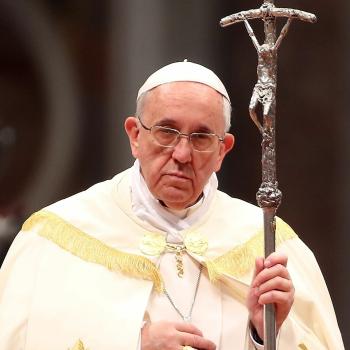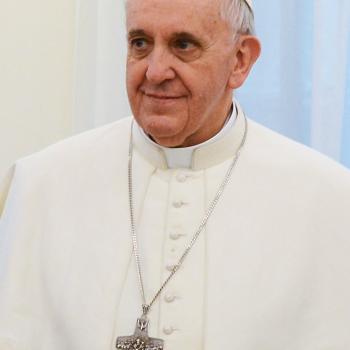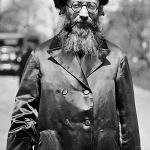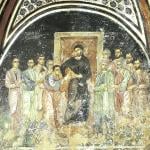Part 2
Part 3
Part 4
Part 5
The Final Acts
The deputation studied the ninety-six amendments proposed at the General Congregations, as well as four-eight that were submitted in writing, and thoroughly reworked the schema. On July 11, Bishop Gasser of Brixen spoke on behalf of the deputation, providing a “quasi-official relatio” that “laid down the basic principles of interpretation which were presumably in the minds of the bishops” on the deputation.[1] He explained that infallibility does not reside in the Pope privately as an individual, but that infallibility is personal insofar as “he is the person of the Roman Pontiff, or public person, that is, the head of the Church in its relation to the universal Church.”[2] Because infallibility is not inspiration or revelation, but simply divine assistance, “the Pope, according to his office and the importance of the matter, is bound to apply the means appropriate for properly investigating the truth and appropriately expressing it.”[3] While consensus of the Church is not required for an infallible pronouncement, the pope nonetheless must exercise his authority through the Church and with the Church.
On July 13, the schema was brought forth for a trial vote. 451 voted ‘placet’, 88 ‘non placet’ and 62 ‘placet iuxta modum’ were the results. Those who voted placet iuxta modum put into writing the amendments they desired that would eliminate their reservation. Of these amendments, the deputation accepted two: 1. removal of quotes by Sts. Irenaeus and Augustine used to illustrate papal infallibility; 2. a statement that made explicit the fact that the infallibility of papal definitions is independent of the Church’s consent. The clause “non autem ex consensu Ecclesiae” (not from the consent of the Church) was added to schema to satisfy the second request. A Public Session was then announced for July 18 for a definitive vote on the definition of papal infallibility.
The Minority had worked tirelessly to amend the schema so that they would not have to vote ‘non placet’ before the Pope at the Public Session. After the July 13 vote, their cause was crippled, and desperation set in along with anxiety and fright. On July 15, the Minority sent a delegation to Pius, and it is rumored that Ketteler, “fell on his knees and with tears besought the pope” to add amendments to the schema that incorporated the entire episcopacy within the context of papal infallibility.[4] Ironically, Pius told him that his qualms needed be addressed to the Council of bishops and not to the Pope.
When the eve of the Public Session arrived, the Minority bishops were in disarray. They met for the last time on the night of July 17 to plan a course of action. Haynald declared that they ought to gird their loins and close their campaign with a united stand against the definition at the Public Session. But Dupanloup, who arrived late to the meeting, convinced them that it would behoove them to avoid the Session altogether, and send a letter to Pius explaining their reasons. Dupanloup knew that if they voted “placet” at the Session, all would know them to be liars. But if they were to vote their conscience, they would be viewed as suspect by the Catholic world for dissenting at the Council. By a vote of thirty-six to twenty-eight, the Minority bishops accepted his idea and composed their last testament: “Nothing has happened to change our opinion, nay rather there have been many and very serious events which do not allow us to depart from our position. We therefore declare that we renew and confirm the votes already given.” They gracefully explained that they did not want to “say ‘non placet’ openly and in the face of the Father” and chose to return to their wanting flocks.[5]
The Public Session commenced at nine o’clock in the morning with an attendance of 535. The voting took place publicly in somber fashion: 533 “placet”, 2 “non placet” was the final tally. The two brave souls were Bishop Fitzgerald of Little Rock and Bishop Riccio of Cajazzo of Naples. The Pope then confirmed the entire Dogmatic Constitution of the Church, which was composed only of the decrees on papal primacy and infallibility. The clause on papal infallibility read:
“(W)hen the Roman Pontiff speaks ex cathedra, that is, when, in the exercise of his office as shepherd and teacher of all Christians, in virtue of his supreme apostolic authority, he defines a doctrine concerning faith and morals to be held by the whole church, he possesses, by the divine assistance promised to him in blessed Peter, that infallibility which the divine Redeemer willed his church to enjoy in defining doctrine concerning faith or morals. Therefore, such definitions of the Roman pontiff are of themselves, and not be the consent of the church, irreformable.”[6]
Thus, the curtain had closed upon the great drama of the Vatican Council; only the reception of its decrees would provide the final encore.
Conclusion
What becomes apparent from such a survey of the infallibility controversy of the First Vatican Council is the impact the Minority made on the final adopted decree, Pastor aeternus. From the onset, those bishops who fought vehemently for the definition of papal infallibility were concerned with a theoretical, dogmatic pronouncement that focused upon the precise locus of infallibility within the Church. Such is the case with Manning, whose arguments stemmed from a juridical and ideological mindset rather than from a practical or historical consciousness. However, the greatest of Minority speakers pointed to the historical difficulties surrounding the definition, and forced the Council Fathers to adapt the schema to fit within the concrete, historical actions of the Church. While many of the Minority left the Council in what they perceived to be defeat, they truly succeeded in forcing the Council to consider historical facts in its formulation of doctrine, naturally distilling the forceful doctrine of the Ultramontanes. Even Newman realized this Providential effect: “Pius has been overruled—I believe he wished a much more stringent dogma than he has got. Let us have faith and patience.”[7] Faith and patience would indeed be necessary for those bishops haunted by the Council; the Church would not again officially take up the matter of papal authority until the Second Vatican Council, ninety-two years later.
——–
[1] Avery Dulles, A Church to Believe In: Discipleship and the Dynamics of Freedom (New York: Crossroad Publishing Company, 1982), 136.
[2] Quoted in Caffrey, 118.
[3] Ibid., 119.
[4] Hughes, 363.
[5] Letter of the Minority bishops to Pius, quoted in Butler, vol. 2 158-159.
[6] First Dogmatic Constitution on the Church of Christ, Pastor Aeternus, 4, 29-37.
[7] Letter of May 15, 1871 to Miss Holmes, quoted in Wilfred Ward, The Life of John Henry Cardinal Newman: Based on his Private Journals and Correspondence, vol. 2 (London: Longmans, Green and Co., 1927), 379.
















